When you’re about to launch a new website, you can feel the buzz of anticipation, but how can you build excitement in your target audience? It’s all in a launch that creates excitement and intrigue, followed by the big announcement, a lot of sharing, and compelling reasons to visit the website your web designer worked so hard on.

Do you remember the movie music that plays before a shark attack? Many people do. This approach is often used in movies – a particular sound plays to tell you that something exciting lies ahead! Use social media to employ a similar tactic to build excitement for your website launch.
Social media posts involve words and pictures. Experts recommend editing such images manually or applying free Lightroom presets before you include them in a post. Your job is to put those together creatively to craft a campaign for your brand that goes beyond “New website coming soon.” Delight your customers with image-centric posts with just enough words to say, “Pay attention to our brand!”, generating intrigue and increasing customer involvement with your message.
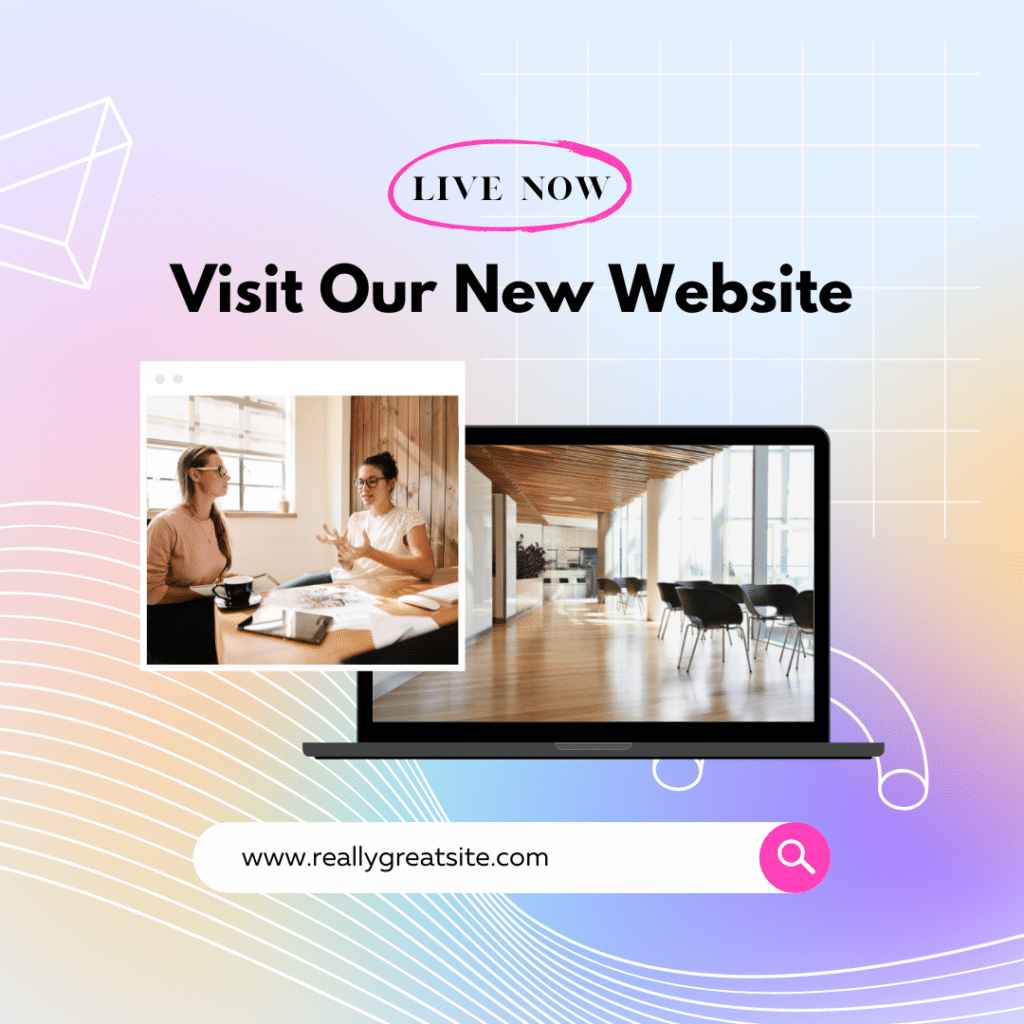
Think about launch day. How do you want to approach it? Do you want to make a big splash on day one, or do you want to take the restaurant soft-opening tactic and release the site with a smaller-scale announcement?
Let’s consider a soft opening type of release. No matter how hard designers and developers work, a great website can have a few errors. If you get the message out to a more limited audience, they can help you find the things that aren’t quite right so you can fix them before your big splash.
When it’s time for the big day, the moment you and your audience have been waiting for, make your announcement through as many channels as needed to reach it. You won’t issue a one-and-done announcement as it works best to reveal your new website in new and different ways so that you don’t miss those that weren’t paying attention. Here are some ideas to promote in your posts, over time:
With varied and frequent posts, more people will get your message, and by targeting specific features on the site, more customers are likely to click and view the site. Once the site is up and running, frequently include a call to action in your posts to encourage the reader. Be the squeaky wheel that gets the grease or, instead, the attention your site deserves.
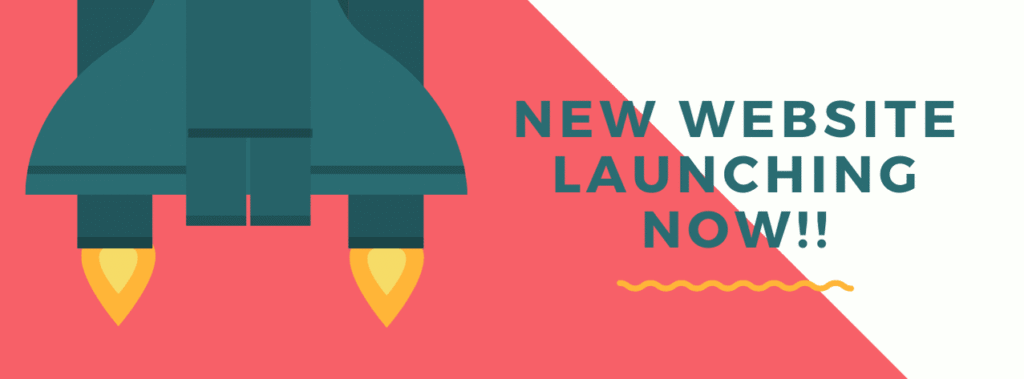
Millions of people still use email, and it’s the most effective way to reach an audience of existing customers and other parties already interested enough to sign up for your email list. Create an enticing subject line message and an impactful, brand-consistent banner for your announcement. Each time you send the email, feature something new or redesigned on the site with a call to action that encourages a website visit.
Here’s a tip to go with sending the announcement email: find ways to build your email list before the launch. On your existing site or a newly created landing page, highlight a sign-up box, or use your social media posts to garner a big list. Flashing red arrows saying, “Sign up here?” That may be a bit much, but you get the idea that if you build your list, you’ll reach more people about your new or redesigned site.
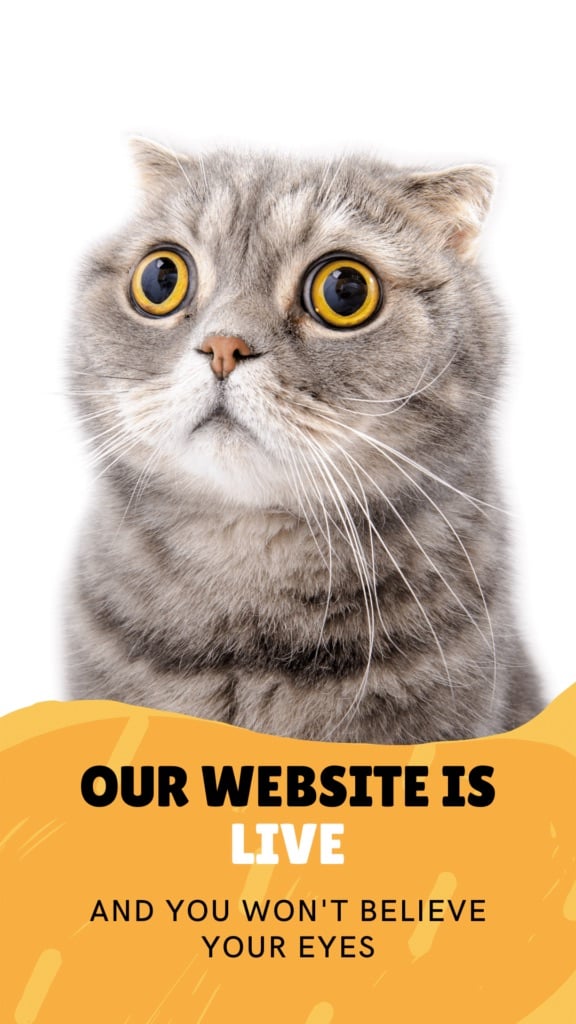
This tip aligns with the previous mentions and reminds you that Facebook, LinkedIn, and email aren’t your only announcement-sharing options. Today’s world is all about finding ways to share information, ideas, opinions, and, unfortunately, bad jokes. Your job is to find those media that will reach your audience based on their lifestyles and habits.
Consider:
More ways exist to promote your brand and news than we can name. Some may be unique to your business, so use those ways to announce your new site.

Wherever you decide to announce and promote your website, note that customers are always looking for something of value. While that can be as simple as an interesting new blog post, consider what you can offer that will pull people in. It might be a discount on the first order from the new site, priority on getting an appointment if made through the new site, or a physical item that customers might like, such as a tote bag, coffee mug, or free e-book with an order.
Or as we like to call it, the data. Track the numbers on everything you do. Run the analytics. Keep reinforcing paths that get visitors to your new site and secure new business. Shift your energy toward new paths of action if something isn’t working.
Standing out is more than just about aesthetics. It’s about authenticity. If your brand's voice isn't genuine, no amount of engaging graphics or intriguing campaigns will sustain your audience's interest. Your branding voice should reflect the core values and personality of your business. It's what your audience will connect with on a deeper, emotional level.
But how do you find this voice amidst the cacophony of the internet? Here are some steps:
Embrace this voice, and let it permeate every piece of content – from the microcopy on your website to the captions on your social media. When you speak from a place of authenticity, your audience listens, engages, and trusts. After all, in the vast sea of digital content, a genuine voice isn't just refreshing; it's magnetic.
Want to know a not-so-secret secret? The best way to make the biggest impact in all those launch suggestions above is to ensure your announcements are visually fun, engaging, and on-brand. The internet is a visual place; bad design is often overlooked, while good design captures attention for longer.
While that may seem overwhelming to everyone who is not a graphic designer, a powerful tool can help you design pieces you would never have been able to produce on your own. And it's easier to use than Adobe Creative Suite.
Check out Canva.com, a design platform with everything you need built in. It has stock photos ready to go. It has a wide variety of fonts for you to choose from. It has pre-made template designs for everything from postcards to flyers to social media posts. They've also recently added the ability to create animated graphics.
They have a 30-day trial to get access to all of their assets (including more fonts, stock photos, stock audio, and stock video) and the ability to create pieces that need custom dimensions. With Pro, you can even create your brand pack to easily access your brand colors, logos, favorite images, fonts, and more.

Suppose you’re putting the right time and energy into launching your site as you did in creating it. In that case, you’ll create a successful campaign that generates excitement and intrigue, resulting in site visits and greater business opportunities.
You may be looking for a brand design agency like Thrive. If so, please get in touch!
Just make sure you use graphics that resonate with your audience.
Have fun!
Your visitors come to your website got there because of a specific search for your product or service. They need what you're selling but when they get there, they also need the answers to some basic questions. So what do you put on your website? If they can't answer those questions on the first page of your website, they will be heading to your competitor's site before you know it.
Getting visitors to your website is the all-important first step. Once they are there, your goal is to keep them there and, maybe, direct them into a sales or information funnel. To keep them around, you need to give them the information they are looking for once they land on your homepage.

It can be easy to assume that because this visitor searched for and clicked on your website, they know what they're looking for and how it can help them. However, just because someone knows they are looking for a realtor or HVAC repair service doesn't mean they know how YOUR realty firm or HVAC company can help them.
Are you known for excellent customer service? Speed? Quality products? If you're in a non-essential business, maybe landscaping or pool installation, you need to make the case for why this person who may be thinking about relandscaping or adding in a pool should make that investment.

The next thing visitors are looking to know is how you are different from your competitors. Why should they choose to work with you? Why should they choose your product over the same, or similar, product made by your competitors?
Again, this could come down to the speed or quality of your service. The history of your company and your mission and values, the ingredients you use in your product, the story of how your company started can all set you apart from your competitors and will humanize your company in a way that will have visitors identifying with your story, which is a great way to build brand loyalty.
Featured Reading: Top 10 Things Every Website Needs

Visitors want to be able to easily find the information they need. If your website lacks a clear navigational structure, your visitors will get frustrated and leave before buying your product or service.
Studies have shown that 50% of visitors will use your site's navigation menu to orient themselves once they get to your site from a referral site. If your site has an overly complicated navigation structure, you're not doing yourself any favors in getting people to stick around.
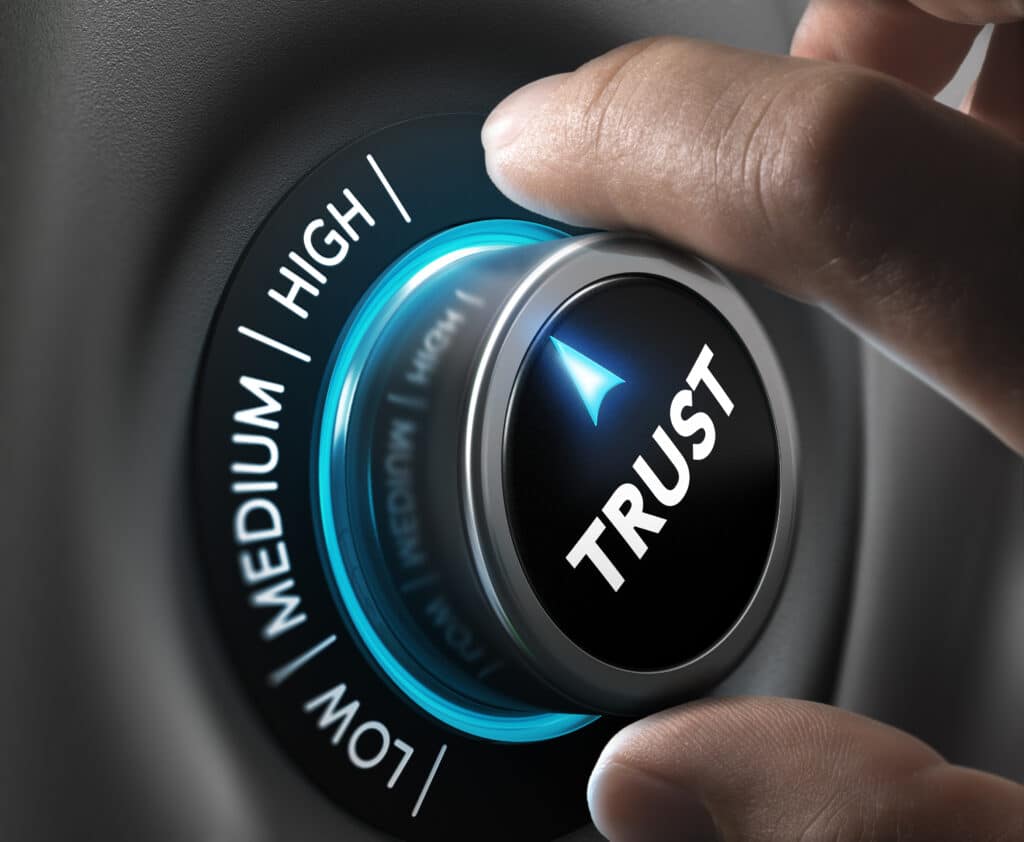
One of the biggest factors in the decision to make a purchase is whether the visitor trusts you or not. If there's even a doubt about the legitimacy of your business and your website, visitors will leave. Luckily, there are a few things you can do to demonstrate the trustworthiness of your business:
Featured Reading: How to Build Trust & Grow Your Business

This last one isn't so much a question as an expectation. Visitors want details about your product in an easy-to-digest manner. That means bullet points, not text blocks. Images and video demonstrations. Short paragraphs of no more than 3-4 sentences.
As web users, we're used to scanning pages to get the information we want. We save our dedicated attention spans for e-books and news articles. When we're looking at products and services, we want access to all the relevant information, and we want easy and fast.
A well-designed homepage with an easy-to-understand navigational structure, intuitive sales funnels, and clear, compelling content is what your business needs to knock out your competition. If you think your homepage is falling short, give us a call. We'd love to help you out.
As a business owner, it's tempting to think that you can do it all. You formulated and built your business from the ground up and it's doing well -- why shouldn't you also be the one to write all the materials your business needs to interact with customers?
Well, for one, you're probably not doing it well. It can be hard to let go of a part of your business that seems so integral to finding and maintaining a strong customer base. So let us show you why hiring a freelance copywriter to craft your written content is a great investment and why you shouldn't be spending your time on copywriting.
A professional copywriter is just that: a professional. Contrary to what many think, copywriting is not a skill that you can pick up and put down just when you need it. Good freelance copywriters have spent years honing their craft. They know what kind of content is needed in specific situations and how to craft content that not only gets your information across but also resonates with your audience.
Ask yourself. If you have a large plumbing job in your home, are you going to shrug and start attacking it yourself or are you going to hire a professional who can get better results in a shorter time?

Be honest. How much time do you currently spend writing content for your business? By hiring a professional writer, you get all of that time back to spend with a client or on other tasks you'd rather be doing.
Remember, you need to be creating consistent, engaging content on a regular basis in order to keep a stream of prospective clients and customers coming to your digital front door. A professional writer or freelance copywriter can create this kind of content in a fraction of the time it will take you.

You know your business better than anyone else out there but that doesn't make you the best person to tell the world about your business.
Stay with me for a minute.
You are responsible for the daily operations of your business. You know it in, out, and backward. However, being an expert in your field does not mean you are an expert at marketing your services and expertise.
What can happen when a business owner writes the content for their business is that the content starts to focus on JUST telling the business's story. It's business-focused content.
What a new client needs when they hit your website is content that's customer-focused. They need content that talks to THEM about THEIR needs. Copywriting that speaks to this is much more likely to sell your products and services.
Related Reading: How to Write Calls to Action that Really Work

If grammar, spelling, and punctuation aren't in your skillset, don't fret. The proliferation of lists cataloging these kinds of mistakes on professional websites shows that you are definitely not the only one out there.
However, your potential customers, not to mention Google, will judge your business unfairly if there are more than a few of these mistakes in your content. It makes you look unprofessional and does not instill a sense of confidence in your audience.

An experienced copywriter can make anything sound exciting. And I mean anything. Have you ever wondered how house painters, roofers, HVAC repair companies, or soap companies can keep up a stream of regular content that ranks well? Two words: quality content.
A freelance writer will not only familiarize themselves with your business and field, but they will also find ways to engage potential clients with interesting and relevant content that speaks directly to your target market, building your reputation and driving sales.
Related Reading: One Easy Way to Convert Visitors Into Customers

How many types of content does your business need to be successful? A product description? A blog post? Sales funnels full of content? Social media content? A white paper from an expert?
You may be great at creating one of these kinds of content but how are you at all of them? Copywriters understand the importance of variety and have the copywriting skill to create anything you need. A well-rounded, strong writer will be able to create everything you need, saving you time and money.

Copywriting is sometimes the last thing that comes to mind when you're getting ready to launch a new product or service. You've spent a lot of time creating and honing this new offering and maybe left the marketing of it until the last minute.
Or maybe you've decided to invest in Facebook ads or a Google AdWords campaign and want valuable content you know will be powerful to make the investment worth it.
Whatever your situation, sometimes you just need professional copy. Investing in copywriting services can make the difference between success and failure.
Copywriting is one of the nine (9) key areas we focus on in our Blueprint for Online Excellence. When visitors land on your website or your social media channels, the words they see must capture their attention and not let it go. Capturing their attention once they are on your online property is the first step to completing a sale or earning a new customer and that's where professional copywriting services come in.
So I have to ask: Does the copy on your website inspire your potential customers to stick around and get to know you better or does it have them heading for the exits? If your answered the latter, contact Thrive Design today.
You rely on your website to generate business in some form or fashion. Depending on the type of website you have, that may be through generating new leads, raising your profile and perceived authority, or processing sales. If your website isn't accomplishing any of this, it's time to take a look at your business strategy and incorporate steps to optimize your site's conversion rates.
When you're looking to convert more of your visitors into customers, starting with your web design can give you some easy wins. If customers are turned off by your website design, that can have a significant impact on conversion. By focusing on website design, businesses can see lots of benefits from conversion, especially in the amount of business they get from visitors landing on their website.

First off, let's take a second to define some key terms.
"Conversions" are when visitors take a desired action on your website, such as filling out a contact form, downloading a lead-generation PDF, or buying a product.
"Conversion rate" is a mathematical formula that can tell you the percentage of users that are taking a specific, desired action on your website. To calculate your website's conversion rate, divide the number of users that take the action you want to measure by the number of total website visitors.
"Conversion rate optimization" refers to the systematic practice of increasing the number of website visitors who take a specific, desired action on your website.
The more users that take an action on your website (that you want them to take), the more leads you'll find and the more business you will get. Converting visitors into customers is usually the number one reason our clients are looking for a new website. Focusing on improving your conversion rate is a great way to improve it without having to invest in a complete website redesign.
You don't have to be a conversion expert in order to improve your website's conversion rate, especially if you are only looking to move the needle a little bit. (We would definitely recommend talking to us, however, if your conversion rate is significantly lower than you want or need it to be.)
You can find success with a conversion rate optimization process that just focuses on small tweaks you can make to elements of your web design.
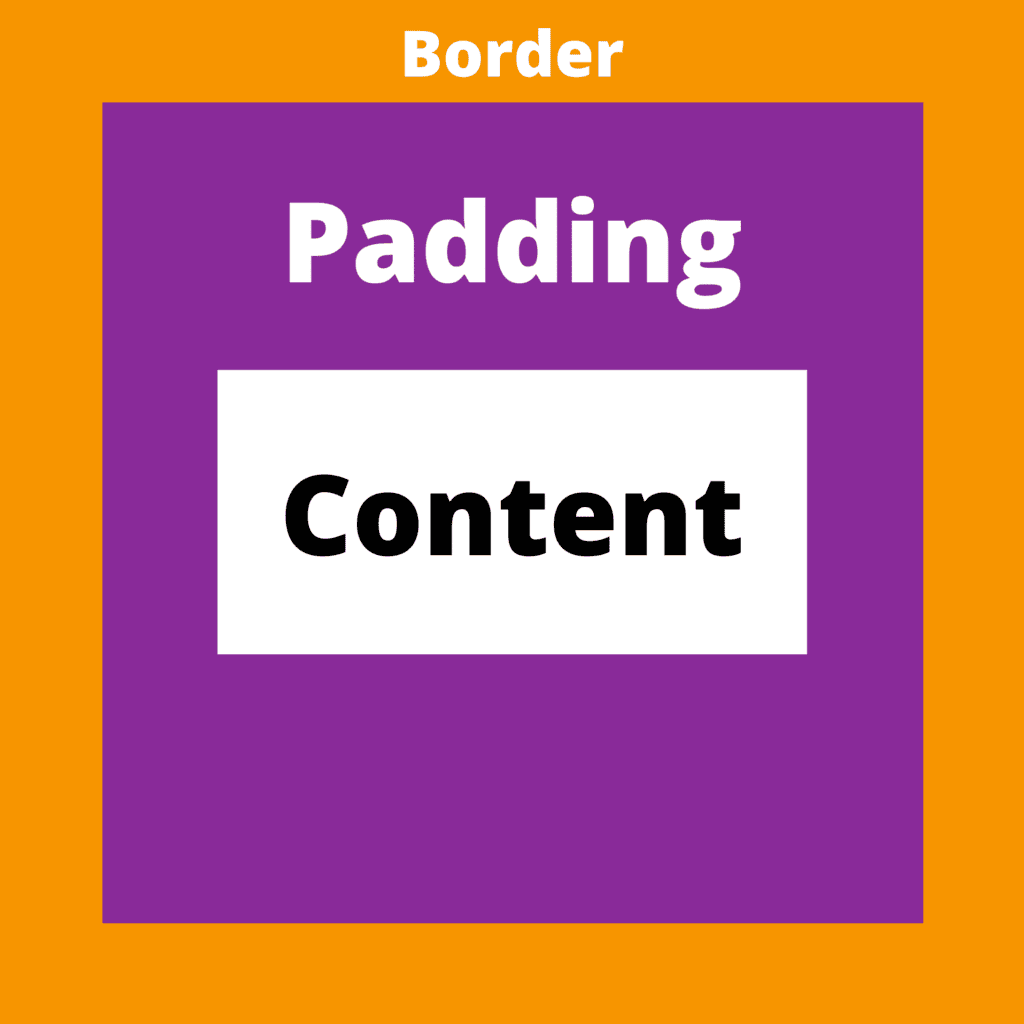
Negative space is the white space on your website. Increasing the padding around elements and increasing the margins of your page will give each element its own breathing space and allows visitors to take each element in before moving on to the next. Websites without a lot of negative space risk overwhelming their visitors which will cause them to click away faster.

Visitors to your website don't know what you want them to do once they get there. Writing specific, clear, and concise calls-to-action (CTA) will let those visitors know exactly what they need to do to become customers. These CTAs should line up with the actions you want your users to take.
For example, if you want your customers to download a PDF, adding an action button that says "Download now!" is a great way to show people what action to take. Same thing if you want them to make a purchase. Adding an "Add to Cart" or "Click here to purchase" button will significantly increase the number of users who take that action.

Speed is key when you want users to stick around. Not only does website loading speed impact your search rankings according to Google's algorithm, but it also impacts users' first impression of your site and whether they stick around or not.
According to recent studies, the average load time for a website is 3.21 seconds on a laptop or desktop. When the page load speed increases from one second to five, the probability of a user "bouncing" off increases 90%. A load time delay of even a second can reduce your conversions by 7%.
Customers landing on your page want the information fast. When you ensure that your website loads fast, you will see a corresponding increase in conversion rate optimization.

Getting your visitors to take the actions you want them to take is easier when they don't have a million options to choose from. By limiting the number of choices your customers are faced with when they hit your site, you are closer to guaranteeing success with your conversion rate optimization process. While you don't want to take away all of the choices your visitors see, giving them fewer options gives them a clearer path to conversion.

The Rule of Thirds is usually thought of as a photography principle but it can be applied to web design with great success as well.
To apply the Rule of Thirds to your website, first, divide your site into thirds horizontally and then divide it into thirds vertically. This will give you a grid with nine equal squares and four intersections. The four intersections are where your visitors' eyes will be drawn naturally.
When you put important images, calls to action, or information at these intersections, it can create a more impactful design that gets your visitors to focus more on the important elements. This amount of focus can boost your conversions.

Customers landing on your site through their mobile devices want to have the same experience they would have landing on your site via their desktop. Focusing on responsive design can have a huge impact on your conversion rate.
More and more, consumers are searching primarily through their mobile devices and are more likely to recommend your business if you have a solid mobile website. Google is also incorporating responsive design into the factors they use to determine search rankings. So responsive design is useful for both conversion rate and search engine optimization.

Even if the face is unfamiliar to your visitors, having pictures of people on your site will elicit emotional responses that can influence how they feel about your product, service, or call to action. Human faces can also show people where to look.
For example, if you have a picture of someone looking at your headline or call to action, visitors landing on your site will also feel compelled to look at that same element.

The biggest factor in whether a website visitor completes the action you want them to and impacts your conversion rate is whether they can comprehend what you want them to do. If you are using a font that is hard for visitors to read, they're not going to stick around long enough to complete an action.
Additionally, your website copy needs to compel them to take that action by showing them what will happen if they don't, eliciting emotional responses that move them to act, and persuading them of the benefits they will receive after taking the action.

Your website can only convert so many visitors if you're not actually offering them things they want or need or you don't actually know how they're interacting with your website. That's where data comes in.
After you've implemented some of these best practices, you can begin to measure user behavior to continue to boost your conversion rates. The best place to begin is with heat maps that can show you how your visitors are consuming your content.
Next, you can start asking your existing customers what they like, what they want more of, what problems they need help solving, and what isn't cutting it in regards to your products or services. This can give you and your business strategy even more insight into your audience and can help you develop services you may not even have known people need.
Taking steps to optimize your site's conversion rate can have a huge positive impact on your business goals. Adding this process into your business strategy is a great way to begin to see more benefits from conversion.
If you need help, have questions, or need an unbiased eye in looking at your website to improve your conversion rate, don't hesitate to give us a call. We'd be more than happy to take a look at your site and help you improve your conversion rate.
—
Thrive Design is a customer-centric web design company from Seattle. Contact us today to find out how we can elevate your business online! Find us on Clutch, UpCity, LinkedIn, Facebook, and Twitter.
You've seen them before. You've probably even clicked on more than a few. But you may not have known that they are a proven marketing tactic that can dramatically increase your conversion rate.
They're called "calls to action" and they are what directs your visitors to take a specific action that you want them to take.

Let's start at the beginning. You've invested money in a marketing campaign designed to accomplish a certain goal: increased sales, increased website visits, increased downloads, or promoting specific products.
You know what the goal of your marketing campaign is, but will users know what to do once they've encountered your marketing pieces? That's where calls to action come into play.
A call to action (CTA) is a short, simple phrase that directs your website visitors to take specific actions that will move them along your sales funnel. It can be just a few words ("Download Now") or a few sentences ("Want to learn more? Download our free guide today!"). It can be a pop-up, a link, or a button.
A good CTA will encourage specific actions based on where the user is on your site and what content they've been interacting with. For example, a "Contact Us" CTA would be out of place and not as persuasive on a landing page for a downloadable piece of content. A "Download Now" action button would be much more relevant to the goal of the page.
Featured Reading: One Easy Way to Convert Visitors into Customers

You will see calls to action anywhere that a company knows people are paying attention. Specific web analytics can show you where your users are looking on your webpage. This allows companies to put CTA buttons anywhere they know their users are looking.
This is the most common place you will see a CTA. A well-designed CTA will stand out from the rest of the page so you are drawn to it and, therefore, more likely to take action. These action buttons should be easy to click no matter what device your visitors are using.
If you're going to interrupt a potential customer's browsing experience with a pop-up CTA, you have to make it worth their while. It should be short. It should be persuasive. And it should be something they will value.
We know that web users don't read all the content they're presented with. They skim. So when you are designing a pop-up CTA button, you need to make the value of clicking immediately stand out. These are great options for sales or free downloads because the value is immediately clear.
In-text CTAs are more subtle than CTA buttons that are used on web pages or in pop-ups. You can see them on this page. They're the links set apart with horizontal lines and the CTA "Read more."
These in-text links are a great way to improve your visitors' user experience. They can point them to related posts, more information about related products, lead generation downloads that are related, or to follow you on social media. All of these actions will bring them further into your sales pipeline, as well as building your reputation as a subject matter expert.
That's not to say that your blog posts should only have in-text CTAs. Blogs are valuable CTA real estate especially for the most valuable CTAs: those that ask people to buy your product or service. These CTAs should be placed at either the top or the bottom of the post as these are the places where people are paying the most attention. You can do some simple A/B testing to find out which placement is most lucrative for your business.
Just like in-text calls to action or CTA buttons on your website, you can effectively use calls to action in your email marketing as well. Whenever you ask your readers to "read the full article," "download now," "take advantage of XX," or "click here to get more information," you're using a call to action.
With email CTAs, it's important to make it stand out. Inboxes are overcrowded and you are pushing out information to your customers, rather than having them come to you through search or a direct click. When you make your links bold or set them apart in an attractive button is key to getting that all-important click.
Strong CTAs are crucial to a successful social media strategy. The social media landscape is crowded. There are so many other posts, videos, and links competing for attention that you need to be incredibly clear about the action you want users to take.
A compelling CTA will grab your audience's attention and make them focus on your offer. The actions you want them to take should be clear and easy for them to accomplish. Users on social media are more likely to follow a CTA that is simple like "click here" or "read more" than they are "fill out this form."
If you are looking for some imagery to help your social media engagement, PikWizard holds a stunning library of over 1 million stock images and videos. These are royalty free and safe for commercial use, with no attribution required.
Featured Reading: 5 reasons you need a professional copywriter: step 2 of 9 for dominating online

Now that we've covered what CTAs are and where you are likely to find CTA buttons, let's dive into the meat of this article: how to write a killer CTA that will increase conversions and help conversion rate optimization.
First thing first. You don't want just any CTA. Throwing a generic "Download now!" link without any context isn't going to significantly help your conversion rate. You want a tailored, strong CTA that will resonate with your visitors and move them to act.
You need to not only tell people what to do but also why they should do it. It's the why that's going to help you increase sales, downloads, submitted contact forms, or whatever your goal for the page happens to be,
An essential part of this tip is including specific action phrases in your calls to action. It may be tempting to use something cute and crafty but action verbs are what propel the reader to actually take the action that will result in more conversions.
Using the first or second person tense makes your CTA much more conversational like you're talking to a friend. Addressing your visitors like they're already a customer, a part of your company's family is a great way to encourage them to take the actions you want them to take.
For example, which one are you more likely to click:
Small businesses need a strong web presence. Download this free guide to find out how Thrive helps them grow.
Or
You need a strong web presence. Download this free guide to find out how Thrive can help you grow.
The odds of your audience taking the action you want them to take once they have left your page plummet to close to zero. Let's be honest. Very few people will put "Join (company's) email list" on their to-do list and come back to your website to give you their email address.
Without a sense of urgency, your audience will have all the right thoughts and intentions of signing up, downloading, contacting you now but won't in the end.
However, creating a sense of urgency doesn't necessarily mean inspiring panic. Offering time-sensitive deals and discounts, a referral incentive, or a sign-up bonus can be a friendly way to create a little urgency on the part of your customers.
The more steps you ask your visitors to take to complete the actions you are asking them to complete, the more likely they are to drop out of the process before finishing. If you want them to provide their email address to download a PDF guide or list, don't make them click more than twice or provide more information than the bare minimum.
When you click on our "Download now!" button to the right, we ask for your first name and email and BAM! you're done. You get our free guide in your email almost immediately for less than 30 seconds of your time. Our guides wouldn't convert half as well if, for example, this button redirected you to a landing page where you had to scroll to the bottom to get to another download button and then have to put in your information and click a third time.
We want people who want our guides to not have minutes to think really hard about if they really need that information. (They do need the information but the longer we make them wait, the less they want it.)
You'll read a lot about how simple web design is better and the importance of keeping your pages clutter-free. (We've even written about that topic.) But the exception to this is with your CTA buttons. You want these to be bold and stand out from the rest of your design.
Use a bright color. Put it in the middle of the page or wherever the eye is drawn to first. Give it some context so readers know what to do with it and why it's going to help them.
Do you know why people are coming to your website? (If you don't, you really should.) The best way to get people to click on your CTA button is to demonstrate how doing so will solve (or help to solve) the problem they need help with.
One of my favorite rules in business and in life is KISS (keep it simple, seriously). When we overcomplicate things, it throws up unnecessary roadblocks to action. The same comes with the language we use.
In 99% of cases, the simplest way to say something is the best way. Cheeky or flowery language may go viral or be used in most "best of" lists, but the odds that you'll be able to replicate that success are low. It's much better to be simple and straightforward so we're guaranteed to quickly and effectively communicate with users.
Featured Reading: The Irresistible Freebie: Step 6 of 9 for Dominating Online
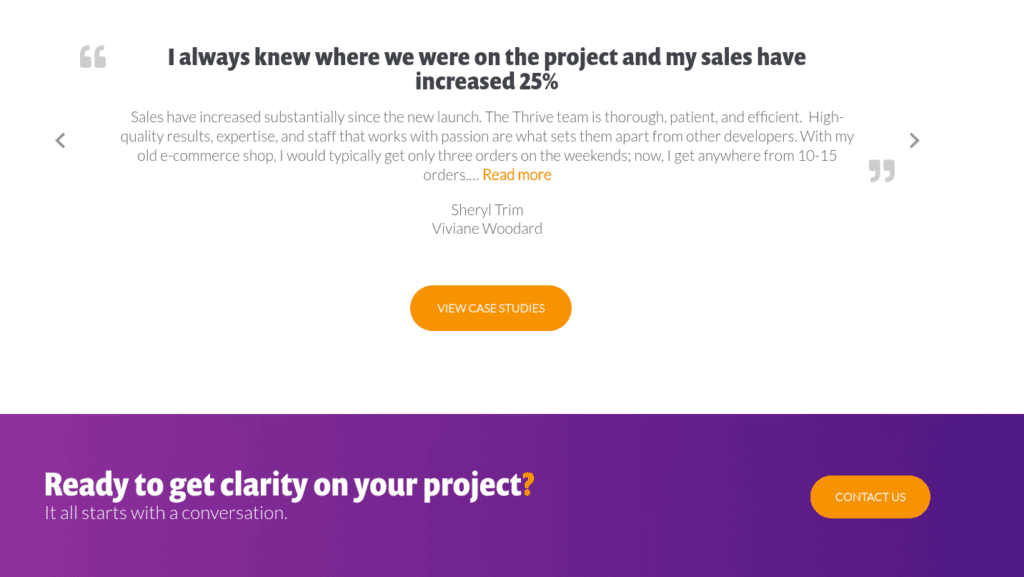
Distilling everything we've talked about in the previous sections, let's take a look at some proven phrases that punctuate successful calls to action. Remember, context is important and it's up to you to provide a simple "why" for your users. These phrases are examples of the action part of "call to action."
The best advice I could give when asked "how do I get more visitors to convert to customers" is "ask them to." That's it. It's simple. When you are providing a valuable service that your visitors are interested in, all they need to take the next step is a prompt from you.
Now, this assumes that you have solid content and information they will find valuable in helping them solve a problem and that your website is optimized and easy to use for visitors. Once you have the building blocks in place for a strong web presence, it's time to add some powerful calls to action to your site and marketing materials.
What has been a call to action that was particularly successful for you?
—
Thrive Design is a customer-centric web design and marketing company from Seattle. Contact us today to find out how we can elevate your business online! Find us on Clutch, UpCity, LinkedIn, Facebook, and Twitter.
We talk to our clients a lot about the importance of creating sticky websites. A sticky website is one that keeps people around longer than other sites. When people stick around, the odds of converting them from a visitor into a customer increase.
Sticky websites also rank better across search engines. If your website is sticky, your "average time on page" statistics are better which signals to Google and other search engines that users find your website a valuable source of information.
So how do you create a website that keeps customers around? First, you need to understand what turns them away.

Your potential customers are looking for websites that add value to their lives. They are inundated by ads throughout their online lives and do not want to visit websites that are just glorified billboards. If they are unable to answer the question "What's in it for me?" within the first 15-30 seconds after landing on your site, they'll leave and your bounce rate will skyrocket.
The other reason that users will leave your site prematurely is fairly simple: trust. Creating a website is deceptively easy and, really, anyone can do it. That means that there are a lot of untrustworthy sites, including ones made by bad actors.
Luckily, many users have unknowingly become fairly sophisticated at analyzing the trustworthiness of a website. They are applying these principles to analyzing your website as well. They're looking for two things.
By focusing on adding elements that boost perceptions in the first category and limiting elements that boost perceptions in the second category, you enhance the likelihood of capturing people's attention long enough to employ other strategies designed to keep potential customers around.

Now that we've covered why people leave your site, let's talk about how you can encourage them to stay around.
Clickbait has a terrible reputation for a reason: people hate being promised one thing and then given another. Your blog posts and landing pages need to fulfill the promise set by the headline if you want people to stick around longer than a few seconds.
Fun fact: users spend an average of fewer than six seconds looking at your website's content. That doesn't mean they aren't getting any use out of it. It just means that they are reading your website in a different way than they read, say, a book.
Website visitors scan your content to get what they need in the least amount of time. If you create content designed with this reading behavior in mind, users will return to your website time and again to get what they need.
Engaging and informative subheadings, as well as shorter paragraphs (two to three sentences), are key to creating a scannable piece of content, even in your long-form content. Lists and infographics are also great options for easy-to-scan content.
Keep Reading: 5 Reasons You Need a Professional Copywriter: Step 2 of 9 for Dominating Online
Even the most well-written posts will leave visitors cold if there's nothing in there that directs them on what to do next. The best time to ask them to take action is right after they've finished reading a blog post. Don't be afraid of direct calls-to-action (CTAs). These CTAs add value to the user experience and increase the time spent on your site.
Another way to direct readers to other content of value is to insert internal links to related content throughout your content as a way to direct traffic through your site. (Ever started reading a particularly valuable article and clicking on every link in it to read more? That's the kind of content direction we're talking about.)
Whenever you have an opportunity to keep traffic on your website, you need to take it. This is especially true with your landing and thank you pages. Users that have landed on these pages have taken an action that shows they are interested in your product or business and want to learn more.
Instead of leaving that lead cold, why not present them with related, useful content on your site that keeps the reader engaged longer.
Guest blogging is a win/win arrangement. When you host guest bloggers on your site, you're inviting a brand new audience to your website as well as taking a little bit of content creation off of your plate. Just be sure that you only post high-quality, original posts without spammy links. Google is cracking way down on low-quality guest blogging.
Similarly, when you guest blog on other sites, you're able to build credible and trustworthy backlinks to your site. These backlinks are a key part of your search engine optimization strategy.
LinkedIn has become the most valuable B2B social media site out there. If you have a moderate to large following on that platform, it can be incredibly valuable to start posting content there to start directing traffic back to your own website. This will also serve to raise your profile in your industry and build trust.
Keep Reading: 12 Effective Digital Marketing Strategies in 2020 and Beyond
Have you nailed your high-intent and popular keyword bases in your SEO strategy? If so, it's time to start investigating the best long-tail keywords to begin targeting. Long-tail keywords are more like search phrases than search words and it's the future of search.
Long-tail keywords now account for the majority of web searches. People are no longer searching for "wallpaper removal." They're searching for "best ways to remove wallpaper." It's time to start incorporating these in your paid SEO strategies.

Content aside, there are many things you can do to make your website a pleasant experience for your visitors. People like to hang out on websites that are welcoming and easy to use. These easy to implement formatting tips will help keep your bounce rate low.
A sticky website is one that benefits both your potential customers and your business. A sticky website works hard to keep your visitors around long enough that they become warm leads and then, eventually, customers. A sticky website is the strongest tool in your digital arsenal.
So, you have to ask yourself: How sticky is your website?
—
Thrive Design is a customer-centric web design and marketing company from Seattle. Contact us today to find out how we can elevate your business online! Find us on Clutch, UpCity, LinkedIn, Facebook, and Twitter.
When visitors land on your website or your social media channels, your words need to capture their attention and not let it go. Copywriting and storytelling are the keys to engaging your audience in meaningful ways that can convert visitors into lifelong customers.
Your story is unique to your business. It’s a big thing that separates you from your competitors, and it’s a great way to relate to your customers. Copywriting and storytelling are how you can compellingly tell your story and weave that story into every aspect of your marketing. To have the impact you want, your content needs to sing.

You see copywriting everywhere. It’s on all the advertising you see. It’s in all of the emails your receive from your favorite experts, companies, and brands. It’s in your favorite how-to guides, blog posts, and podcasts.
Whether you realize it or not, your business already engages in copywriting. All of the text on your website? Copywriting. Your social media channels? Copywriting. The scripts you give your salespeople? Copywriting. Emails you send, fliers you make, advertising you buy? Copywriting.
Sometimes, quality copywriting is what differentiates you from your competition. Poor copywriting can leave potential customers confused about how your product or service can help them with the problem they are trying to solve. It can leave potential customers feeling disengaged or not connected with your business. It can even make them think they are not your target audience.
Good copywriting, on the other hand, will make your brand stand out among the competition. Good copywriting welcomes your target audience through the language and tone used, as well the specific words chosen. Consistently used, good copywriting can give your brand a unique voice in your industry.
By having a recognizable brand voice, you give your customers something to identify with and remember you by. Customers that know your brand, understand your product, and remember your voice are much more likely to become repeat customers and recommend you to others.

Content marketing has become the go-to strategy for businesses looking to dominate online. Well-written copy that is appropriately targeted to your audience will show them the power of your product or service in solving their problems. It can convince them of the superiority of your product or service to that of your competitors.
Investment in a content marketing strategy based on good copywriting can have many benefits for your business.
72% of online marketers say that content creation is their number one SEO tactic. Google agrees. It penalizes websites with poor content by ranking them lower than sites with higher quality content. Google knows this through monitoring the bounce rate, page depth, and time spent on the site
Professional copywriters know how to target the keywords you’ve identified as bringing in the most traffic. They can weave those into your copy naturally, a strategy loved by both users and search engines alike. They know how to write powerful calls to action and how to place links that encourage users to click through.
Bottom line, they know how to create webpages and blog posts that rank well.
Have you ever spent time on a page that was hard to read? Whether it’s confusing, uses language that doesn’t resonate with you, or is just poorly written, if you’ve come across a webpage like this, you probably didn’t spend much time on it.
A well-written website, landing page, or email is a much more enjoyable experience for your audience. They may even find some pleasure in reading through your content when it’s well written. It will keep them more engaged and more motivated to do business with you.
The bottom line is that good copy can increase your bottom line. Powerful calls-to-action and copy explaining the benefits and advantages of your product or service can motivate potential customers to take that next step to become paying customers. Unless properly motivated, it’s easy for visitors to leave your website thinking they should make a purchase but not taking that all-important final step: making a purchase.
Are you in a crowded industry or one where your product or service is complicated? Are you selling something new or unique that people are unfamiliar with? If so, you need copy that powerfully sells your customer on the benefit of using YOUR product or service and why your potential customers need it.
Good copy can persuade potential customers that are on the fence about the benefits of working with you and purchasing your product or service.
We are inundated with words every day. From our scrolling through social media to overwhelmed inboxes, to advertisements in between it all, we see more than our fair share of things to read throughout the day. When you want to stand out from the crowd and actually be remembered, it’s time to invest in good copywriting.
Good copy evokes emotion. It is not just about constructing sentences in English and posting them. It taps into your audiences’ feelings and emotions and leaves them with the knowledge that you, your product, or your service can help make their lives better and easier. By going beyond the intellectual and tapping into the emotional, your message automatically becomes more memorable.

People visiting your website are looking for you to be the expert they need. They’re looking for help solving a problem from someone who is knowledgeable and has experience with their particular problem.
They are not looking for someone who may know everything about, say, painting but can’t be bothered to proofread their website. There’s something about typos, misspellings, and hard to read sentences that turn people off. It takes away from your authority, even if you are the best painter in town.
Good copywriters can help ensure that your website is error-free, easy to read, and engaging.
Even if you have impeccable grammar and a firm understanding of how to write to engage people, that’s not why you got into the painting business, to continue with this analogy. You got in it because you love to paint houses.
However, the internet is not going anywhere and the fact remains that you need to produce new content regularly to maintain and improve your search engine standings. Businesses that blogged daily earn 82% more customers than those that don’t.
Blogging daily isn’t sustainable or feasible for most businesses as the quality of content is as important as the frequency. But this stat goes to show that creating new content is important for earning new customers.
Good copywriters can help populate your website with fresh content regularly. The best copywriters can do it in a way that your customers never know it’s not you writing the content.
Whether you hire a copywriter or tackle the job yourself, it’s important to understand how vital good content is to your business. As you move on to the next steps of our Blueprint for Online Excellence, it’s all balancing on the foundation built by your website’s content.
You want as sturdy a foundation as possible. You want a foundation that shows your target audience you are a business they can trust. Any digital marketing strategy you implement needs to be based on effective content. Effective content is dependant on effective copywriting.
Effective copywriting? Well, for that it's not a bad idea to invest in a professional copywriter.
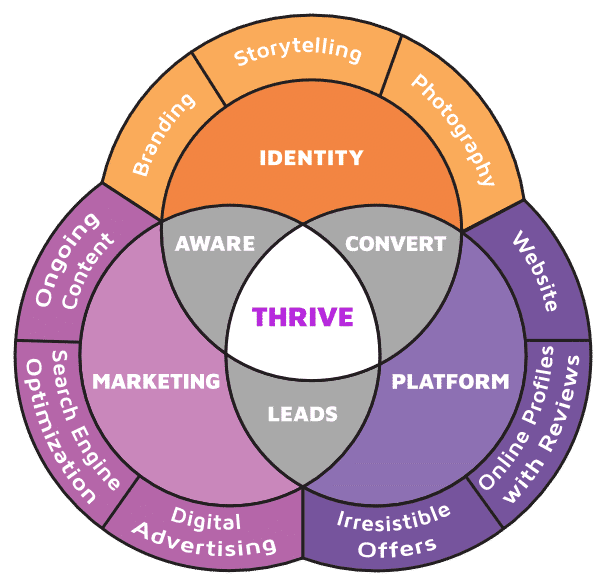
—
Thrive Design is a customer-centric web design and marketing company from Seattle. Contact us today to find out how we can elevate your business online! Find us on Clutch, UpCity, LinkedIn, Facebook, and Twitter.
Once you’ve dialed in your SEO, perfected your pay-per-click ads, and ensured your website has a user-interface that your customers will love, how do you get those shiny, new visitors to take the next step to become customers or clients?
Solid, catchy, compelling content.
Copywriting is one of the keys to your website’s success. You want content that persuades and convinces easily, not that is stilted and hard to read. You want your content strategy to be supported by quality content.
The tips here will help you create content for your website, marketing materials, emails, and more that converts people to customers and customers to raving fans.

Writing is something you either love or hate. If you're in the latter category, these steps and tips will help you make the most compelling content you can in the least amount of time. (If you really hate it, check out our new copywriting services and let us take care of it.) If you're in the former category, you will definitely find some tips in here that will help you take your writing from 10 to 11.
The first thing you need to master is the art of the headline. You need to be able to grab people’s attention with a headline that speaks to the problem you are trying to solve. However, even for professional writers, headline writing can be a tricky art.
You want a headline that is short and sweet but also packed with words that are powerful and stir emotions. You want a good mix of words people are used to seeing and unique words that will catch their attention and hold their interest. And you need it to speak to the actual content you are creating.
Sound tricky? It is. Luckily, there are some great, free headline analyzers out there that will give you an overall score for your headline and give you tips to improve it. I like the one from coschedule. It’s definitely worth the email sign up.
(In case you were wondering, this headline got a score of 68. Not the best, but definitely not the worst.)
Do you know what doesn’t motivate your readers? Reason. Reason can convince them that it’s a good idea to do something but it doesn’t actually get them to click the “buy” button. It probably won’t even get them to click the “schedule a consult” button.
To get your potential customers to take action, you need to get them to feel something about you and your product. You need to get them excited about the possibilities or worried about missing out or scared that their competitors will get an advantage.
All of these emotions will help convert intention to action. Of course, you need to lay out the best case for using your product or service. You shouldn’t ignore reason all together when writing. But you also shouldn’t shy away from using emotion to get your customers to take action.

Do you know why Black Friday became a huge sales driver for stores? Do you know why Amazon has made Prime Day it’s own sort of holiday? Do you know why you check the “Clearance” rack whenever you visit your favorite store?
Because all of these deals are short-lived. Black Friday deals only last a little while. Prime Day deals have an actual countdown clock on the product page so you know exactly how much time you have left to snag that item. Items on the clearance rack are gone, never to return, once they’re sold.
Retailers get you to buy more than you intended to by convincing you that there won’t be a better deal later and that you need to buy NOW in order to save big. But, really, that TV will probably go on sale again. That Prime Day deal may not be the best one available, even though it has a countdown clock. (True story, I snagged a Prime Day item cheaper on the non-Prime Day item listing the first year Prime Day was introduced.)
If your content can instill a sense of urgency in your readers, they are more likely to take the action you want them to take.
Featured Reading: Top 10 Things Every Website Needs.
Ok, this step is tricky. For SEO purposes, having a good amount of long-form content on your site, specifically your blog, is a best practice. However, what you want to avoid is having long blocks of content that are hard for readers to, well, read.
Unless it’s a subject they are truly interested in, most people will scan content for the information they need. It’s even better if they can scan headings that direct them to the information that will be most valuable to them.
As you can see, I practice what I preach. I keep all paragraphs to no more than three sentences. (Four is ok if they are short.)
I break up my content with clear, descriptive headings that you can quickly grasp and either move on or read more if you want more information. That way, I can produce long-form content that brings in readers while making that content easy to digest and more likely to be actually read.
This same content strategy can be used throughout your business website. Break up product descriptions with headings. Use headings when you are describing your company on the “About Us” page or your process.
You won’t go wrong when you make your content easier for your audience to scan.

One mistake that many websites make is assuming the audience knows what to do once they’ve finished reading their content.
Spoiler alert, they probably don’t.
Most visitors to your website are looking for directions. They want to be told HOW to solve the problem they are facing. They need you, through your content, to tell them WHAT to do next in order to solve it.
That’s where your call to action comes in. Your content needs a call to action that’s clear and unmistakable. It needs to be prominent and hard to miss. The content's call to action should also be simple to accomplish.
A great call to action is short, sweet, to the point: Buy today for clearer skin tomorrow!
A poor call to action buries the actual action: When you invest in this skincare line, you are investing in better skin for life.
See the difference? Both talk about buying a skincare product but one gives a sense of urgency and is explicit in what you need to do to solve your skincare problem. The other one talks around the act of purchasing and doesn’t actually tell the reader what to do, just what will happen if they take the action.
This is where your content strategy comes into play. Your content strategy should be based on thorough research and supported by data about your audience.
You are looking to solve a problem for your audience through your product or service, right? The best way to get the people who need help with that specific problem to view you as a trustworthy purveyor of the solution is to give them content that helps them solve the problem your business solves.
Here’s an example. Right now, there are two blog posts on my site that are bringing in loads of traffic and are scoring great on search engines. But it’s doing me no good.
Why? Because the two blog posts are about free UX design courses and the best fonts to use for online readability.
I do not offer UX design courses and I’m not looking for customers who are interested in the readability scores of fonts because I worry about that for my clients. So as popular as these blogs are, I’m not super thrilled because the traffic they’re bringing in aren’t my people.
My people are people who know their site can do better and be better and need someone to help them along the way. My people are worried about things like how to convert readers into customers, not how to become a better UX designer.
Featured Reading: Why Professional Photography and Copy Convert Website Visitors into Paying Customers

To create content that truly converts, you need to eliminate distractions that are unrelated to the goal you are trying to achieve.
That lead generation download prompt on your sidebar? Try and ensure they are to lead gen content that’s related to the on-page content.
In-text links to other material? Make sure that the link is to content that is on-topic or expands on the topic at hand.
Everything on the page should support the search query that brought your reader to the page. Copy that converts will only be as good as the supporting material. Make sure it's all going to the same goal.
For this step, I’m not talking about 90% of a single piece of content. I’m talking about 90% of ALL your content. You want your audience to come to you for expertise and information. That way, when it comes to time to sell them something, they trust that you know what you’re talking about.
People don’t want to rely on a sales site for information. Audiences don’t actually like to be sold to constantly. If they are receiving a pitch every time they land on your site, they are going to stop coming altogether.
On the flip side of that, if they come to your site and mostly get information, tips, and tricks that are helpful to them, they will be more likely to buy when you do pitch products and services.
This also applies to your social media pages. People love social media because it allows them to get informed, be inspired, and ignore their to-do list for a little while. If your social media pages are constantly selling something, people are not going to follow you.
Since social media is a great place to find new customers, you want to make sure that your pages are set up to attract and keep visitors through informative, interesting, and only sometimes sales-y content.

Again, your audience doesn’t want to spend more time than necessary reading and trying to understand your content. They have other things they want to do. When you make sure that your writing is clear and makes good use of headings, it’s easier for your audience to read and digest the parts that are most valuable to them.
When you make life easier for your audience, they are more likely to remember you and your website as a useful source of information and become regular readers and visitors. When they become regular readers and visitors, they are more likely to become paying customers.
Featured Reading: Branding, Website Creation, and Marketing: the Correct Order
How mad would you have been if you clicked on this link and landed on a page of 1700 words with little to no useful takeaways on how to convert visitors into customers?
Mad is probably the wrong word. (See? Clarity is important!) But you definitely would be annoyed. Content needs to do what it promises to do. If you promise your visitors tips on how to paint a room with no mess and then spend the whole time selling them on your painting service, they will click out and probably won't come back.
Your visitors’ time is valuable. Don’t waste it.
A large number of clickthroughs don’t mean much if your bounce rate skyrockets because their expectations were not met.
Your business writing is one of the key ways to convert a website visitor into a regular customer. Whether it's in your marketing materials, your email outreach, your blog, or throughout your website, great copywriting is what is going to separate you from your competition. It's what's going to convert your visitors into customers. It's what's going to make you the go-to place for people looking for help with the problem you solve.
But copywriting isn't the end-all, be-all of conversion tactics. In fact, it's just one of the nine steps to dominating online that I've identified in my Blueprint for Online Excellence. Once you've mastered each of the nine steps, there will be no stopping your business growth.
—
Thrive Design is a customer-centric web design company from Seattle. Contact us today to find out how we can elevate your business online! Find us on Clutch, UpCity, LinkedIn, and Facebook.
There are only four types of websites and you MUST know what kind you need, otherwise, you will end up wasting money on ineffective design and marketing.

Every website can be sorted into one of four types. By knowing what kind you want before making any design or marketing decisions, you can save yourself from a world of hurt and wasted money.
Do you know what kind of website you have or want to have? If you answered “No,” fear not. That’s where we come in! This article goes over each kind, looking at their defining factors and sales structure.
By figuring out what kind of website you need, you can effectively attract the audience you want. A well-defined marketing plan, coupled with strong design decisions, can lead to more money in your pocket.
The authority website serves as an online presence for your business. This is the place potential customers can go to see what work your company has done and how to get in contact with someone about your services.
Leads are generated offline. People visiting your site have already heard about your company and are looking for more information. Your website serves as an online placeholder, giving your business more legitimacy in the eyes of your customer.
An example of an authority website would be a construction company website. A construction company will be recommended to customers by other contractors and people in the field. The lead generation happens offline.
Sales happen offline as well. Construction companies use contracts to make their sales, which are done in-person versus online. The website aids the company in “getting over the hump” and convincing their leads to become money-generating customers.
See Related: Is Your Website Providing the Information Your Visitors Want?

As its name suggests, this site is focused on generating leads through its online presence. SEO and targeted marketing strategies play a huge role in bringing in new customers. Sales, however, still occur offline.
These websites are found online by people who have “buyer’s intent.” This means the prospective customer is basically ready to spend their money. They just need to be convinced that your business is the perfect place to do this spending!
A divorce attorney located in Seattle would use their website as a lead-generation tool by incorporating SEO targeting those looking for such a service. Their customers are searching online, through search engines, like Google. Successful leads then move offline for the final sale.
Related reading: SEO Seattle
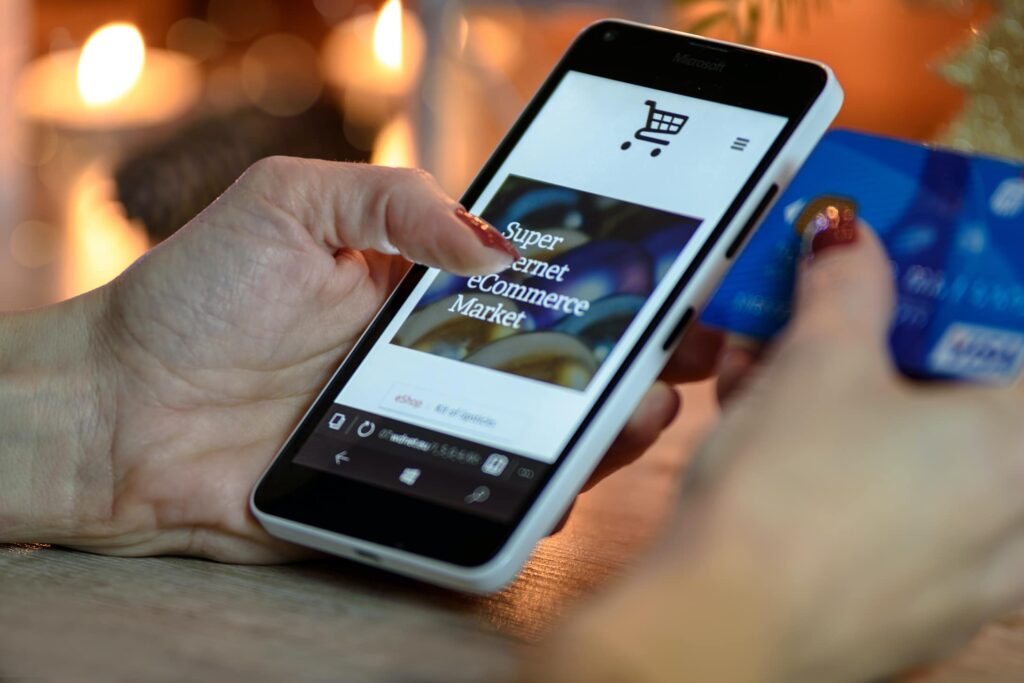
This site is especially popular, as both leads and sales are all done completely online. These are the sites that sell products or services through e-commerce. If a site has a cart function, then it falls into the sales website category.
Easy enough to understand, right? Not quite. A company’s website can still fall into the sales category if that business utilizes online scheduling and payment, but provides the service in-person. The leads and sales are both still online, but the actual service itself is not.

A utility website functions more like a tool than a standard website. These are the companies whose business and website are one and the same.
Airbnb and Facebook examples of utility websites. They don’t necessarily generate leads or sales online. They just exist in the online space and are accessible to anyone that chooses to use them.
First and foremost, marketing and advertising for each type of site should not be handled in the same way. Each site has different requirements that need to be met in order to excel in attracting new customers.
An authority website needs excellent photography and content that positions the company as an expert in whatever services they offer. A lead-generation site, however, needs tons of search engine optimization done in order to convert prospective customers into paying customers. As for sales websites, they need to ensure that their buying process is as streamlined as possible.
Bonus Reading: What is the #1 Goal of Your Website?
In order to figure out what kind of site you will need, ask yourself the following questions:
If you can’t narrow it down to just one type, that’s okay! Websites can fall into more than one category. Just ensure you’re meeting the needs of each kind of site in order to achieve the greatest amount of success.
—
Thrive Design is a customer-centric web design agency from Seattle. Contact us today to find out how we can elevate your business online! Find us on Clutch, UpCity, LinkedIn, Facebook, and Twitter.
Category: Web design seattle
Your website design is only as good as the leads it brings in. If it isn’t offering valuable content in exchange for a potential lead’s email, you’re leaving money on the table.
That’s the subject of my sixth step for online domination: finding your killer offer.
See Related: How Do You Announce a New Website Launch?

Your killer offer is a valuable piece of content you create that will entice potential leads to enter their email addresses in return for being able to access that content.
For example, I design and build amazing websites that get results for businesses. So my killer offer is a downloadable PDF that outlines the five things you need to know before embarking on a new website project or hiring a website designer.
(In fact, if you’re curious about what five things you need to know before starting a website project, check out the sign-up form in the sidebar of this page. 👉)
Your killer offer could be anything from a YouTube video to a short e-book to a case study or a checklist. Whatever it is, it should either be something that cannot be found by browsing your website or should contain expanded content from your website.
Basically, it should be something special that they can only get by giving you their email address.
Bonus: How to Add a New Website to Google Analytics

Deciding what to offer as your killer offer can be tricky, but it doesn’t have to be complicated or time-consuming. There’s probably even content waiting to be repurposed into your killer offer on your website already.
Have you done a series of blogs on the same topic? Package them together in a short e-book.
Are you a fan of the listicle format and have a bunch of those? Pare them down and turn them into checklists with actions people can take to reach a goal.
Do you have a go-to list of resources in your industry? Create an email or document that explains why you love them and links out to them and publish it as a “Definitive Guide to My Industry.”
Take what it is that your clients come to you for and give a taste of it to your leads for free. THAT’S the best way to find your killer offer.
The key to creating a killer offer that converts is to avoid making it a hard sales piece. The best killer offers are those that position you as an expert in your field, that show your potential clients that you know what you’re talking about.
(If you still need help brainstorming ideas for the format of your killer offer, HubSpot offers some great ideas in this piece on lead generation ideas.)

Now that you’ve created your killer offer, it’s time to create the follow-up on your killer offer. There’s no use in generating great new leads who are clearly interested in what you have to offer if you don’t have a plan to cultivate them.
In my case, signing up to receive my short e-book on creating a winning website triggers an email sequence that sends five emails over the course of two weeks. These emails further position Thrive as the right company to work with on their website project.
We’re not trying to sell them. We’re trying to educate them more about us so that, when the time is right, we’re the ones they think of when they’re looking for a web design firm.
That should be your goal too. You’re not selling in these follow-ups. You’re educating.
Here are some questions that your killer offer follow-up could answer:
A killer offer doesn’t have to be elaborate. It doesn’t have to be 100% unique. It doesn’t even have to be that long.
What a killer offer needs to be is relevant, valuable, and useful for your potential clients. It needs to demonstrate your expertise in a way that will stick with them. And, most of all, it needs to be prominently displayed on your website.
Don’t keep leaving money on the table with a website without a killer offer. Now is the time to start cultivating those website visitors that want to get in touch but aren’t looking for the hard sell. They need your killer offer.
The Irresistible Offer is only one of the elements we've identified as necessary for dominating online. To read more about how to create killer websites, check out our Blueprint for Online Excellence.

Keep Reading: How Long Does it Take for a Website to Show Up on Google?
—
Thrive Design is a customer-centric web design and marketing agency from Seattle. Contact us today to find out how we can elevate your business online! Find us on Clutch, UpCity, LinkedIn, Facebook, and Twitter.
Category: Web design seattle
Every website is different. An e-commerce site is not a landing page is not an authority building page.
But. (And this is a big but.)
There are certain essentials that all websites need to have in order to be successful and achieve your business goals.

As you peruse this list, you may notice that none of the items listed could be considered “groundbreaking.’” But that’s the thing about essentials.
They aren’t trendy. They never go out of style. And they’re sometimes easy to overlook in favor of the new, hot trend. We’ve noticed, however, that the websites that have a solid base of essentials perform way better than their trendier counterparts.
So how many of these essentials does your website boast?
If you’re a regular reader, you’ll know that I have a thing for speed. My favorite statistic about websites is that if it doesn’t load in 3 seconds or less, your visitor is moving on to your competitor. Speed is essential for your first impression and it can say a lot about your business. Visitors tend to view slow websites as unprofessional, annoying, and not as secure as quicker sites.
So take the time to compress your images, evaluate your plugin use, and ensure there’s no loose code anywhere that’s slowing down loading speeds. (You can also check out our article on why your WordPress site may be running slow for more tips and tricks.)

More than 33,000 websites are hacked every day. Not all of these websites are big-name companies with loads of data for hackers to steal. Most of them are small- to medium-sized businesses like yours. There are bots that work day and night to search out and infiltrate vulnerable sites.
They target these sites in order to steal customer information, send out spam, or use your website to distribute malware to your visitors’ computers. Just because you’re small, doesn’t mean you’re not a target. We’ve got lots of things you can do today to ensure that your site doesn’t become the next target.
75% of visitors to your website are making their initial judgment of your business based on the look of your website alone. Fortunately for you, website design is not the same as fashion design. While people can disagree about aesthetics all they like, there is a surprising about of consensus about the fundamentals of good design. Easy navigation. Easy to find contact information. Good usability. (Professional photography and content don’t hurt either.)

People like to be entertained as they are informed these days, even when they’re shopping for goods or services. Your website content should give them just that. It should be easy to read and understand, well-organized, and, ideally, keyword-optimized so Google knows it’s there (see Essential #7 for more on this). If you have a knack for copywriting, that’s great! If you don’t, you may want to consider investing in a professional copywriter to revamp or rewrite your site.
This one is tricky. A few years back, having your social media feeds directly on your website was all the rage. Please don’t think we’re advocating for this. Those feeds slow down your website significantly and make your design look clunky and outdated. However, you should have links to all of your social media properties on every page of your website, especially if you update them frequently, and vice versa.

In the early days of the internet, finding a great domain name was easy. Pets.com. Care.com. Think.com. You were able to easily choose a domain that encapsulated your brand and product offering. It’s a little trickier these days with literally billions of websites, and more created each day.
However, it’s important that your customers are able to easily remember, and easily access, your website. That means no including numbers for letters or any other clever spelling tricks that get you the name you want but sacrifices your customers’ ability to get there. You may have to think outside the box.
Take our domain, for instance. There is, obviously, already a Thrive.com and we didn’t want to limit ourselves geographically by putting our city in the domain. So we went outside the .com genre and claimed thrive.design. Clear, clever, and impactful. The perfect domain name.
None of the changes you’ve made to speed, design, copy, or security will matter one bit if your customers and potential customers can’t find you. That’s where Google comes in. (Because, let’s be honest, who uses Bing?) If you’re not showing up on the first page of Google search results for key words or phrases that impact your business, customers are not finding your website.
Good SEO is more than stuffing your website full of keywords and hoping that it ranks higher. (Google actually docks you points for that SEO tactic these days.) Regularly updated, relevant content is actually the best way to improve your SEO rankings. You also need to ensure that your metadata and tags also include the keywords you are trying to rank for, a much-preferred method to keyword stuffing.
Also, don’t forget about Local SEO.
Related reading: SEO Seattle

(Ok so we ran out of Ss here. It was a good run though.) Your website’s visitors need to know what you want them to do. Do you want them to sign up for an email? Do you want them to schedule a consultation? Do you want them to find the perfect product for their needs?
A website that doesn’t lead its visitors to action is a website that isn’t performing as well as it could be. Using clear calls to action and a defined sales funnel is a great way to convert more visitors to customers.
Your customers aren’t just browsing your website on their laptops or desktops. They’re browsing your website on their phones and tablets too. Your website should be just as beautiful, just as easy to navigate, and just as fast no matter what device your customers are using. This is called responsive design.
Customers looking to buy locally are going to be turned off immediately by a poor browsing experience on their phone. Clunky navigation and slow speeds are a fast way to lose mobile customers. A quick way to check if your website is responsive is to log on from your own tablet or mobile device. If you’re unhappy with the browsing experience, your customers are too.

Your website is an extension of your brand, and that should be reflected throughout the site. Your logo should be prominent. Your brand colors should be used strategically. The tone, look, and feel of your website should match the tone, look, and feel of your other marketing elements. Your customers should be familiar with your brand. If they don’t get the same brand experience, they won’t trust that your website is...your website. If you don’t have a brand yet, you can check out our branding, website, and marketing primer.
The great thing about essentials is that they don’t go out of style. If you focus on dialing in these ten things, you are guaranteeing your website visitors a great website experience for years to come.
—
Thrive Design is a customer-centric web design agency from Seattle. Contact us today to find out how we can elevate your business online! Find us on Clutch, UpCity, LinkedIn, Facebook, and Twitter.
Category: Web design seattle
15-30 seconds is all you have to show that you are a trustworthy authority with the knowledge to solve your customer's problems.
Within that time your website visitors have formulated a general sense of who you are, what you do, how professional your company is, and if they can trust you.
They have no choice. We’ve evolved as humans to judge and put things into categories quickly. We need your audience to judge you as reliable, professional, engaging, and trustworthy.
Your photography and copy need to be created specifically to speak to the needs and problems of your target audience. Professionals know how to do this.
They don’t do it alone, don’t get me wrong. They interview you (and sometimes your customers), perform market research, and use their own experience too. Professional content is more involved than what it appears at first glance.
If you want your website to convert your website users into paying customers you need content and photography created by people who do it full time for a living. It’s the same reason I don’t do my own plumbing. It isn’t in my wheelhouse.
We’ve met many a client who has said they’d take care of their own photography and 3 months later are still working on it. To put it bluntly, you should be working on your business and letting someone else come in and shoot your location, products, and/or services being made. You can collaborate with them but if you want it done, and done right the first time, hire a pro.
Your photography is part of your brand. It tells a story that you can then continue through social media, advertising, brochures, and other types of marketing.
The human brain is more inclined towards the visual representation of any written content. We translate pictures very quickly and your users will decide in 2 seconds (or less) if a photograph speaks to them.
Content that is all words might fail to stop a reader to skim through it, but pictures can get them to slow down and look at them closely.
Content that is easy to read and dotted with the right heading types and pictures immediately gets noticed by the search engines and ranks well on the search engines. If optimized correctly, your website’s images can end up on Google Images which can increase your traffic a bit.
The pictures that you post on your website are vital for the branding of your business. The tone, depth, and background in your photographs all convey a message and add to the feel of your website.
For an online grocery store, a picture of their fresh produce on the shelf or workers picking those goods from a farm can brand the store as clean, self-sufficient and hygienic. But this is only possible when you use your photographs on your website and not buy them from a stock website.
Apart from the illustrations and graphics, photographs are a crucial part of your visual content and should be handled as such. There are some inconveniences that you might have to face if you use stock photographs sold at different sites. What are those?
There are plenty of websites selling photographs related to a variety of subjects. Photographers sell the copyrights of their work to these sites, and then anyone can buy those photos from these sites.
The concept might look easy enough, but it takes away individuality from your website. Your competitors and anyone else can use the same picture that you’ve posted on your site and make your content look recycled.
A website selling stock photographs have thousands and thousands of pictures related to different subjects that you can browse through by putting in the right keywords. But even with an efficient searching system, you cannot always find the right photograph to go along with your content.
For instance, if you are selling homemade candles, then it doesn't make sense to post pictures of candles that you haven’t produced.
Outsourcing or hiring a professional photographer to provide you with original photographs is the kind of investment that will be rewarding for your business. Most photographers know technicalities that are associated with website layouts and take care of photograph dimensions and pixel quality for you.
Moreover, you’ll own the rights of all photographs posted on your website and won’t be subjected to any legal penalization or copyright lawsuits.
The primary purpose of a website is to get a brand or business recognized or noticed by the targeted audience. Optimizing your content skillfully so that it can rank well on search engines is one way to influence the search engines.
You might think that you have the aptitude to write for your website but know that you'll be competing with thousands of businesses selling the same service and product from all around the world. Therefore, your website will have a better chance of thriving against your competitors in professional hands.
Your web copy has the potential to make or break your business’ standing as it influences not only the customers but also search engines.
If your copy is optimized, then search engines will favor your content more than your competitors. The SEO techniques mentioned below cannot be learned overnight, and only a professional copywriter knows how to utilize them to produce a lead generating website copy. Moreover, a professional copywriter will know how to put together the right kind of words to influence the decisions of leads and potential clients.
1. Using the right keywords.
If you want your website to get noticed by the search engines then include the right keywords in your website’s copy. A professional copywriter will know what words to use and how many of them to use them in an average length copy.
2. Website referrals.
Hyperlinking specific words and outsourcing articles is also a rewarding SEO technique. Copywriters have enough experience and insight to figure out a way to hyperlink some of their old writings in their latest content without losing relevance.
Using different heading types is another way to get in the good graces of any search engine. Experienced copywriters know how to use this information to improve the quality of their content.
Attaching relevant images and videos with your website’s copy is also a tried and tested SEO technique.
Business owners will spend thousands of dollars to make their website look visually appealing but not enough on its content. Words have the ability to make your leads lean in towards your services and respond to your call to action immediately.
So how does your copy convert leads into buyers?
As mentioned earlier, a crisp and engaging writing style can make your leads read through the entirety of your content without losing interest. A conversational writing style that addresses the potential customers directly creates an air of familiarity between you and your leads. A professional copywriter knows what words to use to appeal to the emotional tendency of a lead. Furthermore, they know how to build the flow and take your content from point A to B and then C.
A good web copy is the one that has all the information that a leader needs to know to make their decision. From introducing your services to highlighting your product’s selling features all come under the expertise of a copywriter.
Any skilled copywriter will know how important it is to write an enticing call to action to complete any sales funnel successfully. Using the right words can increase the conversion rate of your website, exponentially.
A professional copywriter knows how to increase the conversion and ranking of your website on SERPs. Once you are visible to your targeted audience, then whether they buy your services or products or not depends solely on how you market them through your content.
Your website is probably the first thing that your potential customers will see. Therefore, you need to do an excellent job of leaving a profound first impression on them. Seeking professional help might be the only way to guarantee the success of your website.
Website copy that fails to fulfill its essential purposes is good for nothing. After all, businesses go online to expand their reach and increase their business to increase sales, but an incompetent website copy will turn off your users.
A website copy should weave in the right adjectives in sentences to introduce your business to the targeted audience. It should be concise yet compelling enough to intrigue the potential leads to know more about your business.
The content you provide at your website has the potential to brand your business. The overall impression that a reader gets from your website’s copy becomes your brand. If someone reads your web copy and doesn’t understand the nature of your services that they will associate that confusion with your business.
Furthermore, if you use extravagant words but don't elaborate on your services, then a lead will peg your services as subpar, and that will become your brand. That is why hiring a professional copywriter is imperative as they are experienced to figure out the psychology of your targeted audience.
It is essential to post only the prime-quality content on your site as it later can be recycled to market your products. A well-written web copy can be a catalyst to make your marketing campaigns a big hit as it has the potential to convert the leads sent its way into customers effectively.
A web copy’s prime focus should be highlighting the critical elements of your product and services. A lead should know why your product is better than your competitors and how buying it will benefit them or their business?
If you fail to convince your lead about the efficiency and importance of your products and services then there is no use of investing thousands to make your website appealing for the audience. The end goal of a web copy is to convert a lead into a buyer, and only a professional copywriter can help you achieve that.
If you want results online hire a professional copywriter and photographer. Repurpose that photography and content onto your offsite assets and marketing.
Related reading: Copywriting seattle
—
Thrive Design is a customer-centric web design agency from Seattle. Contact us today to find out how we can elevate your business online! Find us on Clutch, UpCity, LinkedIn, Facebook, and Twitter.